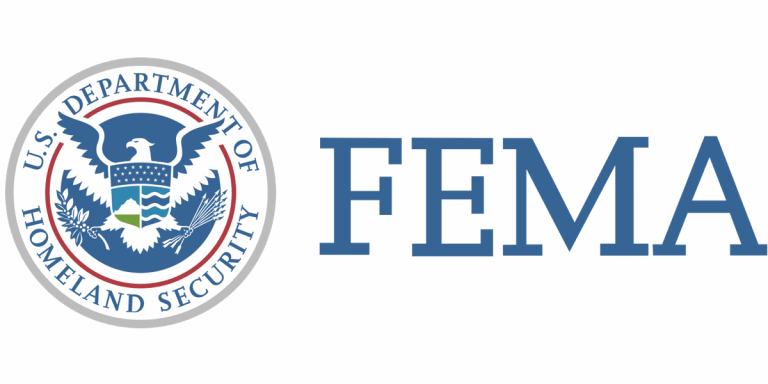Likely in response to market conditions, as well as uncertainty over its 2022 reinsurance tower’s exposure to hurricane Ian, the National Flood Insurance Program’s (NFIP) traditional reinsurance tower has been renewed by FEMA at just $502.5 million in size for 2023, a more than 50% reduction on the prior year.
 For 2023, the US Federal Emergency Management Agency (FEMA) said that it has transferred an additional $502.5 million of the NFIP’s financial risk to the private reinsurance market.
For 2023, the US Federal Emergency Management Agency (FEMA) said that it has transferred an additional $502.5 million of the NFIP’s financial risk to the private reinsurance market.
Once again, this is an annual reinsurance agreement effective just through the 2023 calendar year, as FEMA has not yet managed to secure multi-year traditional reinsurance for the NFIP’s flood risks.
For 2023, the $502.5 million of traditional reinsurance has been placed with 18 private reinsurance companies, FEMA said.
That’s significantly down on the 28 private reinsurers that participated in the NFIP’s reinsurance renewal a year ago, when FEMA secured $1.064 billion in protection for 2022, a little more than double this years renewal.
Also of note, for 2023, is the fact that the attachment points for FEMA’s reinsurance renewal are much higher in the tower than last year.
For 2023, the $502.5 million of NFIP reinsurance is structured to cover:
- 8.5625% of losses between $7 billion and $9 billion.
- 16.5625% of losses between $9 billion and $11 billion.
Last year, the lowest layer of the tower attached at $4 billion of losses to the NFIP, which is the layer currently considered potentially exposed to losses from September’s hurricane Ian.
For 2023, the $502.5 million of reinsurance has cost FEMA a premium of $90.2 million.
The 2022 tower, which was double the size and began attaching much lower down, cost $171.9 million.
It appears that affordability and reinsurer appetite are the two reasons for the NFIP’s reinsurance tower shrinking so much for 2023, forcing the coverage further up the tower while reducing the amount of protection that it was economic to secure.
“FEMA remains committed to reinsurance as a risk transfer measure to ensure the NFIP has the capacity to pay claims, especially now with the growing intensity and frequency of weather patterns brought on by climate change,” explained David Maurstad, FEMA’s senior executive of the National Flood Insurance Program. “Our No. 1 job is to provide policyholders peace of mind in knowing that the NFIP will be there when they need it most.”
FEMA noted the importance of reinsurance, saying that it “reduces the NFIP’s need to take on additional debt in order to pay claims and creates a more financially sound program that benefits policyholders and taxpayers alike.”
Reinsurers will pay a portion of claims where the NFIP’s losses from a major flood event rise above the attachment.
At $7 billion, the attachment is now far higher for 2023, as even where hurricane Ian is concerned the current expectation that the NFIP’s losses may only eat into the lowest layer, rising above the $4 billion mark where that attaches.
FEMA’s latest estimate for the NFIP’s claims from hurricane Ian is for the total to fall between $3.7 billion and $5.2 billion, which would erode some of the lower layer of traditional reinsurance and is likely one driver for reduced appetite this year, alongside the hardening of reinsurance.
FEMA currently also has three outstanding FloodSmart Re catastrophe bonds, that provide reinsurance from the capital markets to the NFIP.
These total $1.425 billion of reinsurance, across the three FloodSmart Re deals, the most recent having been sponsored in February 2022.
So for the 2023 contract year, FEMA currently has $1.9275 billion of reinsurance coverage available.
A full-payout of that reinsurance limit, across the traditional tower and the catastrophe bonds, would only come available after a named storm event that drove NFIP claims above $11 billion.
It’s possible FEMA might find the catastrophe bond market a more conducive location to bulk out its reinsurance arrangements further this year and we are told there have already been initial soundings of the cat bond market on the potential for another deal in the first-quarter of this year.
FEMA’s 2023 traditional reinsurance renewal was brokered by Guy Carpenter.
The NFIP’s reinsurance tower was $1.064 billion in size for 2022 and at that point, along with three catastrophe bonds that were in-force, the flood program had around around $2.3 billion of flood reinsurance coverage available to it for last year.
FEMA procured $1.153 billion of flood reinsurance from 32 counterparties at the January 2021 renewals, with $2.35 billion of total coverage available including the FloodSmart Re cat bonds that were in-force at the time, the largest the program has ever been.
Before that, FEMA renewed its traditional reinsurance program with $1.33 billion of flood reinsurance at the January 2022 renewals, and in January 2019 renewed a $1.32 billion traditional reinsurance placement.
The first full placement was in 2018, when FEMA secured $1.024 billion of traditional reinsurance.
 View all of our Artemis Live video interviews and subscribe to our podcast.
View all of our Artemis Live video interviews and subscribe to our podcast.
All of our Artemis Live insurance-linked securities (ILS), catastrophe bonds and reinsurance video content and video interviews can be accessed online.
Our Artemis Live podcast can be subscribed to using the typical podcast services providers, including Apple, Google, Spotify and more.































